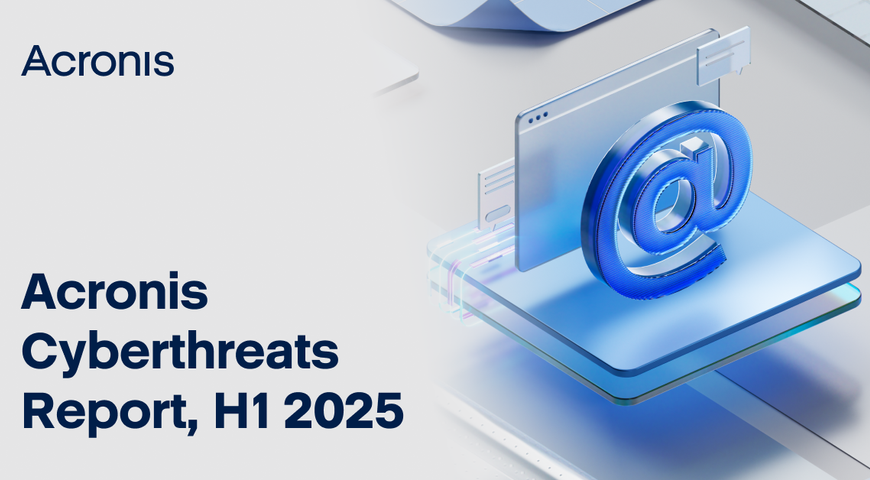
Incident response (IR) is an organization's systematic approach to preparing for, detecting, containing, remediating, and restoring business operations after a cybersecurity incident. It is a cyclical process designed to handle a breach efficiently, from the initial alert to full business recovery, while learning from the event to strengthen defenses.
For any IT leader or managed service provider (MSP), a mature incident response capability is no longer optional — it's the difference between a manageable event and a business-ending catastrophe. This guide provides a comprehensive framework for building and executing a modern IR strategy.
Key takeaways
- An effective incident response plan minimizes financial, reputational and operational damage from cyberattacks such as ransomware.
- The process follows six key steps, from preparation to post-incident review, based on established frameworks like NIST.
- True cyber resilience is achieved only when incident response is natively integrated with backup and disaster recovery, ensuring the business is not only secured but made whole again.
Why is incident response a pillar of modern security?
Incident response is a critical pillar of security because it provides the structured capability to minimize the impact of an inevitable security breach. Its primary goals are to reduce financial losses, protect brand reputation, and ensure compliance with regulatory requirements.
Modern cybersecurity acknowledges a hard truth: prevention will eventually fail. When it does, your response determines the outcome. Here's why it's so vital:
- Mitigates financial damage: The average cost of a data breach continues to climb into the millions. A swift, well-practiced IR plan dramatically reduces these costs by limiting attacker dwell time, preventing lateral movement, and slashing downtime. The faster you can respond and recover, the less you lose.
- Protects brand reputation and client trust: How you handle a crisis matters. A chaotic, slow response erodes client confidence and can inflict long-term brand damage. A professional, transparent, and effective response demonstrates control and a commitment to protecting stakeholder data.
- Meets regulatory and compliance mandates: Regulations such as GDPR, HIPAA and CCPA have stringent breach notification requirements. An organized IR process ensures you can meet these deadlines, avoid hefty fines, and provide auditors with the necessary evidence of due diligence and corrective action.
Of course. Here is the rewritten pillar page content with the requested enhancements for contextual relevance, semantic richness, answer-style formatting, topical authority and natural brand integration.
The six steps of the incident response plan: A unified framework
An effective incident response plan follows six core steps: Preparation, identification, containment, eradication, recovery and lessons learned. This framework, adapted from industry standards like NIST SP 800-61, provides a repeatable process for managing any incident. However, to achieve true business continuity, the security actions of containment and eradication must be unified with the operational goal of rapid recovery.
1) Preparation: Building your defenses before an attack
Preparation involves getting your people, processes, and technology ready before an incident occurs. This is the most critical phase, where you establish the policies, train the team and deploy a unified toolset — ideally with security and backup in one stack — to minimize complexity and ensure readiness.
Plan and team:
- Develop the IR policy: Formalize definitions, state the CSIRT's authority to act, and align the plan with business objectives like Recovery Time Objectives (RTO) and Recovery Point Objectives (RPO).
- Form a CSIRT: Assign core roles: Incident commander, forensic lead, communications liaison and liaisons for legal/HR.
- Establish protocols: Create escalation matrices, stakeholder contact lists, and secure, out-of-band communication channels (e.g., a dedicated Slack or Teams channel separate from primary corporate accounts).
Tool deployment and hardening:
- Unify your stack: A common pain point is managing dozens of siloed tools. Using a single platform with one agent and console for backup, anti-malware, EDR/XDR, and patch management, like Acronis Cyber Protect Cloud, dramatically reduces overhead, eliminates security gaps from misconfigurations and simplifies response actions.
- Harden your backups: Backups are the ultimate safety net. Ensure they are stored in immutable storage, scanned for malware before recovery, and held in sandboxed vaults for critical systems.
- Test your recovery: Regularly perform restore-verification tests to prove your backups are viable and that your team can meet its RTO goals.
For MSPs/MSSPs:
- How can you apply policies efficiently across all your clients? Use a multi-tenant platform that allows for policy inheritance while maintaining strict per-tenant data isolation.
- Document retainer SLAs, on-call rotations, and evidence handling procedures that guarantee a chain of custody for each client.
2) Identification: How do you know you’ve been breached?
Identification is the process of detecting a deviation from normal operations and analyzing its scope and severity to determine if it is a security incident. This process is faster and produces fewer false positives when security telemetry from EDR/XDR is correlated with intelligence from your backup systems in a single view.
- Detect with high fidelity: Utilize cross-layer monitoring from an XDR solution to watch for indicators of compromise (IoCs) and anomalous behavior across endpoints, servers, cloud workloads and Microsoft 365/Google Workspace.
- Triage and validate alerts: A frequent challenge is alert fatigue. You can significantly reduce false positives by cross-referencing suspicious artifacts with data from recent backup scans. For example, if an EDR alert flags a file, you can instantly check if that file was present in the last known-good backup.
- Achieve single-pane visibility: Instead of switching between a security console, a backup console, and a patching tool, use a unified dashboard. Acronis Cyber Protect Cloud provides a single view showing live data protection health alongside security alerts and suspicious activity, providing immediate context without the swivel-chair effect.
For MSPs/MSSPs:
- Leverage tenant-scoped dashboards to manage alerts on a per-client basis while also viewing cross-tenant threat trends.
- Automate the initial collection of evidence into a case record to meet SLA timers for Mean Time to Detect (MTTD).
3) Containment: How do you stop the bleeding?
Containment is about taking immediate action to prevent the incident from spreading and causing further damage. The most effective containment is executed from the same console used for protection and recovery, enabling instant, one-click isolation of affected systems.
Short-term (immediate response):
- Isolate compromised endpoints from the network to stop lateral movement.
- Automatically capture volatile memory and network connection data before isolation for forensic analysis.
Long-term (stabilization):
- Implement temporary access controls for affected user accounts or network segments.
- Apply micro-segmentation rules to create firebreaks around critical assets until the threat is fully eradicated.
Integrated action with Acronis: Because security and backup are unified, an analyst can issue an isolation command and trigger a failsafe backup snapshot from the very same console in Acronis Cyber Protect Cloud, ensuring no data is lost during the response.
For MSPs/MSSPs: Isolate an entire client's environment with a single policy or perform parallel containment actions across multiple affected tenants simultaneously.
4) Eradication: How do you remove the threat for good?
Eradication involves removing the root cause of the incident and all malicious artifacts from the environment. True eradication is confirmed not just by endpoint cleaning tools, but by validating the system's state against a known-clean baseline from your backups.
Identify and remove the root cause: Use forensic tools to uncover the attacker's persistence mechanisms (e.g., scheduled tasks, new services, registry keys).
Execute a cleanup workflow:
- Deploy AV/EDR tools to remove malware files and other artifacts.
- Automatically patch the vulnerabilities that were exploited to gain initial access.
Verify with backup intelligence: After cleanup, how do you prove the machine is pristine? Perform a deep scan of the live system and compare its file and configuration state against the last known-good backup. Any remaining deviations represent a potential backdoor.
For MSPs/MSSPs:
Utilize standardized eradication playbooks for common threats like ransomware to ensure consistent, auditable execution for every client.
5) Recovery: The Acronis difference — instant restoration
Recovery is the process of restoring services to full business operation. Instead of spending days reimaging systems and restoring data, an integrated approach enables you to execute a targeted, one-click rollback from a known-good point in time, restoring only what was damaged in minutes. This is the final, crucial step to guaranteeing business continuity.
For MSPs/MSSPs:
- How do you recover 10 clients at once? Use a centralized dashboard to orchestrate cross-tenant bulk recovery operations.
- Generate automated reports detailing the recovery timeline and success to prove SLA compliance and provide tangible value during billing cycles.
6) Lessons learned: How do you get stronger after an attack?
This final phase, also known as a post-incident review, is where you analyze the incident to turn it into a measurable improvement. By conducting a blameless post-mortem, you can refine your controls, update playbooks, and demonstrate a clear return on your security investment.
Conduct a blameless post-mortem: Within a week of the incident, gather the CSIRT to review the timeline, key decisions, and outcomes. The goal is not to assign blame but to identify root causes and contributing factors.
Update plans and playbooks: Integrate findings into your IR plan. This could mean adding new detection rules to your SIEM, refining escalation paths or updating training materials for the next tabletop exercise.
Track metrics and report on value:
- Measure key performance indicators (KPIs) like mean time to detect (MTTD) and mean time to recover (MTTR).
- Show a clear trend line demonstrating how your investments in unified tools and training are reducing dwell time and business impact.
For MSPs/MSSPs:
Provide each client with a post-incident "Improvement Report" that serves as a tangible deliverable and a powerful tool for contract renewals.
Understanding incident response tools and services
Common IR tools
- SIEM (Security Information and Event Management): Aggregates logs from across your entire IT environment for centralized analysis, rule-based alerting, and compliance reporting.
- EDR (Endpoint Detection and Response): Provides deep visibility into endpoint activity (laptops, servers) to detect and respond to threats that evade traditional antivirus.
- XDR (Extended Detection and Response): The evolution of EDR. XDR ingests and correlates data from multiple security layers—including endpoints, email, cloud, and network—to provide a more complete picture of an attack.
- SOAR (Security Orchestration, Automation and Response): Automates repetitive tasks and standardizes response workflows by integrating all your security tools into coordinated playbooks.
Incident response services
- MDR (Managed Detection and Response): An outsourced service where a provider manages your EDR/XDR tools, providing 24x7 monitoring, threat hunting, and guided response. Learn more about Acronis MDR.
- Incident Response Retainers: A pre-negotiated contract with an IR firm that guarantees you rapid access to expert responders during a crisis. Retainers ensure you have "boots on the ground" support with pre-defined SLAs when you need it most.
Frequently Asked Questions (FAQ)
What are the six steps of incident response?
The six universally recognized steps of incident response are: Preparation, identification (detection and analysis), containment, eradication, recovery, and lessons learned (post-incident review). This lifecycle, popularized by NIST, ensures a structured approach to managing a cyberattack from start to finish, with a modern emphasis on rapid, validated recovery to ensure business continuity.
What is the difference between SOC and CSIRT?
- A SOC (Security Operations Center) is a centralized, continuous function responsible for ongoing monitoring, detection, and initial triage of security events, often operating 24/7.
- A CSIRT (Computer Security Incident Response Team) is a specific, incident-driven team that is activated to manage a significant security breach. The SOC is the "first responder" that handles daily alerts, while the CSIRT is the "specialist team" that takes command during a major incident to coordinate containment, recovery and communication.
In simpler terms, the SOC is like the ER triage and urgent care, handling things continuously and addressing multiple issues, while the CSIRT is like a specialized surgical team called in for big emergencies.
What is an IRP in cybersecurity?
An IRP (Incident Response Plan) is a formal, documented strategy that details the policies, roles, procedures, and tools an organization will use to respond to and recover from a security incident. A comprehensive IRP aligns technical response actions (like using EDR/XDR and backup/recovery) with business goals and compliance requirements, forming a core component of an organization's overall cyber resilience strategy.
Don’t just respond. Recover and thrive.
In today’s threat landscape, it’s not enough to simply respond to cyberattacks – true resilience means you also recover quickly and fully, so your business keeps running with minimal interruption. Traditional incident response often ended once the threat was “removed,” but as we’ve highlighted, that still leaves companies picking up the pieces (restoring data, rebuilding systems) for days or weeks. Acronis’s philosophy is that security and recovery are two sides of the same coin. You should integrate your anti-malware, incident response, and backup/recovery strategies into one seamless process.
Imagine this: you detect a ransomware attack within minutes, hit a button to stop it and roll back affected files from backups, and within an hour it’s like the attack never happened – no ransom paid, no data lost, minimal downtime. That’s the power of unifying incident response with instant recovery. It transforms the narrative from “We survived an attack but suffered days of outage” to “We defeated an attack and kept our business running.”
Acronis enables organizations (and MSPs serving organizations) to achieve this level of resilience through the Acronis Cyber Protect Cloud platform. By having advanced security tools and backups in one solution, you gain the ability to not only detect and respond to threats but also restore systems and data with a single click. The result: you don’t just respond, you come back stronger. Each incident becomes a test that your business passes and learns from, rather than a catastrophe.
In practical terms, a complete incident response strategy with Acronis means:
- Integrated defense: One agent and console for antivirus, anti-malware, EDR, patch management, and backup. Less complexity, faster operations
- Faster response: Automated playbooks and unified alerts enable attacks to be caught and contained in seconds. For example, if ransomware is detected, the system can automatically freeze that machine and alert you.
- Instant recovery: Unique “attack-specific rollback” technology that lets you restore affected files or entire systems to a pre-attack state immediately, without manual rebuilds.
- Confidence and continuity: Knowing that even if an attack slips through, your data is safe (with immutable backups) and your business can be up and running in minimal time gives you peace of mind. It also frees up IT and security teams from firefighting to focus on proactive improvement (because the recovery burden is so much lower with the right tools).
Bottom line: Don’t settle for an incident response plan that ends at neutralizing the bad guys. Your plan should end at business-as-usual – systems operational, data intact, and perhaps most importantly, lessons learned to make you even more resilient next time. With Acronis’s integrated approach, you gain that full spectrum: from threat prevention and detection to one-click recovery and beyond.
In a world where cyberattacks are not a question of “if” but “when,” the organizations that thrive are those that can take a punch and recover immediately. By unifying your security and backup strategies, you ensure that even when incidents happen, they don’t bring you down. You’ll respond, recover, and continue moving forward with confidence.
Next Steps: If you’d like to see how this works in practice, we invite you to experience integrated cyber response and recovery in action. Check out a demo of Acronis Cyber Protect Cloud to witness how quickly a threat is neutralized and rolled back. Additionally, as part of being prepared, consider downloading our Incident Response Plan Template to help build or refine your IRP with the concepts discussed in this guide. Equip yourself with the right plan and the right tools, and you won’t just respond to cyberthreats – you’ll overcome them and keep your business thriving.
About Acronis
A Swiss company founded in Singapore in 2003, Acronis has 15 offices worldwide and employees in 50+ countries. Acronis Cyber Protect Cloud is available in 26 languages in 150 countries and is used by over 21,000 service providers to protect over 750,000 businesses.



